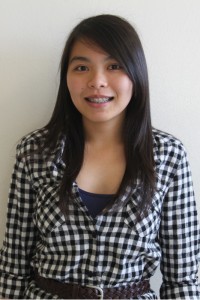As the class of 2012 relish their last year around the Viking campus, the graduating students still face one of the most hectic and highly anticipated part of their senior year: college applications. Although a few have decided to take an easier route and are planning on attending a community college, a great number of students chose to take a longer stride and are reaching for universities and even Ivy Leagues.
“My decisions were, based on practicality,” Ivy Hughes, 12, said. “I had a couple reach schools that I could possibly get into, a couple schools I felt confident that I could get into, and a school that was my back up.”
In comparison to other prestigious universities, community colleges offer less of the college atmosphere that some undergraduates want to experience. Most importantly, students cannot obtain a Bachelor’s degree unless they transfer out to a university. Even then, their benefits—a reduced tuition, transfer credits, and programs that develop vocational skills—have attracted many applicants. Advanced Placement student Ibrar Khan, 12, willingly decided to attend a city college after reflecting the pros and cons among different schools.
“It’s more convenient, and it’s cheaper,” Khan said. “When I go to a university later on, I want to go to one of my choice and not just go because I got accepted.”
Besides city colleges, state universities also prove to be popular among the seniors due to the same reasons: they are often close to home and cost less. But despite their proximity, what the latter provides that community colleges do not is the opportunity for the students to join the countless activities available outside of class.
“Going to a state university just seems like a better choice since they’re closer to home, yet they still offer a lot of academic options that the other universities offer,” Eduardo Lopez, 12, said.
State universities and city colleges do in fact contain their own advantages, but the seniors have not disregarded the possibility of going to a university and obtaining the chance of living the infamous college life many high school graduates crave for. Staying in dorm rooms, attending events, joining various activities, and living beyond the restrictions of their parents are among the aspects that bring undergraduates the enthusiasm of going to some place distant.
“I want to meet new people, experience new things, and become more independent,” Miriam Escamilla, 12, said.
On the other hand, a few Vikings have eagerly taken a step further and applied for an early decision to Ivy Leagues. The more prominent universities require a lot more from the students; high SAT/ACT scores, excellent academic records, leadership skills, and extra curricular activities are among the many requirements. But in spite of the tremendous amount of work they necessitate, Genesis Anguiano, 12, has accepted the challenge as she applied to five Ivy League universities.
“One of the reasons I am interested in applying to Ivy League schools is having the opportunity to be taught by amazing faculty,” Anguiano said. “I can only imagine what a great experience it would be to take a class taught by philosopher Peter Singer at Princeton.”
Although many are excited to leave the high school grounds, the application process was a hassle for the aspirant college students. Besides filling in the usual background information, academics, and extracurricular activities portion, personal statements proved to be the worst part.
“The personal statements were the most challenging because that is where you show how you are different than everyone else in a limited amount of words,” Giovanni Rico, 12, said.
Deadlines have arrived for the nine Universities of California, California State Colleges, and early decisions, but applications still await those who plan to attend private schools, which are due in January, or city colleges, which are due in March. After days, or even months, of dealing with the application process, the undergraduates must now participate in the waiting game as they anticipate for the results that will possibly shape the near future.




